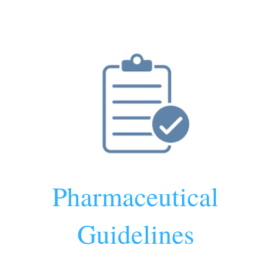Organization and management
– The laboratory, or the organization of which it is part, should be an entity that is legally authorized to function and can be held legally responsible
1.1 The laboratory, or the organization of which it is part, should be an entity that is legally authorized to function and can be held legally responsible.
1.2 The laboratory should be organized and operate so as to meet the requirements laid down in these guidelines.
1.3 The laboratory should:
- have managerial and technical personnel with the authority and resources needed to carry out their duties and to identify the occurrence of departures from the quality management system or the procedures for performing tests and/or calibrations, validation and verification, and to initiate actions to prevent or minimize such departures;
- have arrangements to ensure that its management and personnel are not subject to commercial, political, financial and other pressures or conflicts of interest that may adversely affect the quality of their work;
- have a policy and procedure in place to ensure confidentiality of
— information contained in marketing authorizations,
— transfer of results or reports,
— and to protect data in archives (paper and electronic);
- define, with the aid of organizational charts, the organization and management structure of the laboratory, its place in any parent organization (such as the ministry or the NMRA in the case of a national pharmaceutical quality control laboratory),
- and the relationships between management, technical operations, support services and the quality management system;
- specify the responsibility, authority and interrelationships of all personnel who manage, perform or verify work which affects the quality of the tests and/or calibrations, validations and verifications;
- ensure the precise allocation of responsibilities, particularly in the designation of specific units for particular types of medicines;
- nominate trained substitutes/deputies for key management and specialized scientific personnel;
- provide adequate supervision of staff, including trainees, by persons familiar with the test and/or calibration, validation and verification methods and procedures, as well as their purpose and the assessment of the results;
- have management which has overall responsibility for the technical operations and the provision of resources needed to ensure the required quality of laboratory operations;
- designate a member of staff as quality manager who, irrespective of other duties he/she may have, will ensure compliance with the quality management system. The nominated quality manager should have direct access to the highest level of management at which decisions are taken on laboratory policies or resources;
- ensure adequate information fl ow between staff at all levels. Staff are to be made aware of the relevance and importance of their activities;
- ensure the traceability of the sample from receipt, throughout the stages of testing, to the completion of the analytical test report;
- maintain an up-to-date collection of all specifications and related documents (paper or electronic) used in the laboratory; and (n) have appropriate safety procedures (see Part four).
1.4 The laboratory should maintain a registry with the following functions:
- receiving, distributing and supervising the consignment of the samples to the specific units; and
- keeping records on all incoming samples and accompanying documents.
1.5 In a large laboratory, it is necessary to guarantee communication and coordination between the staff involved in the testing of the same sample in different units.
